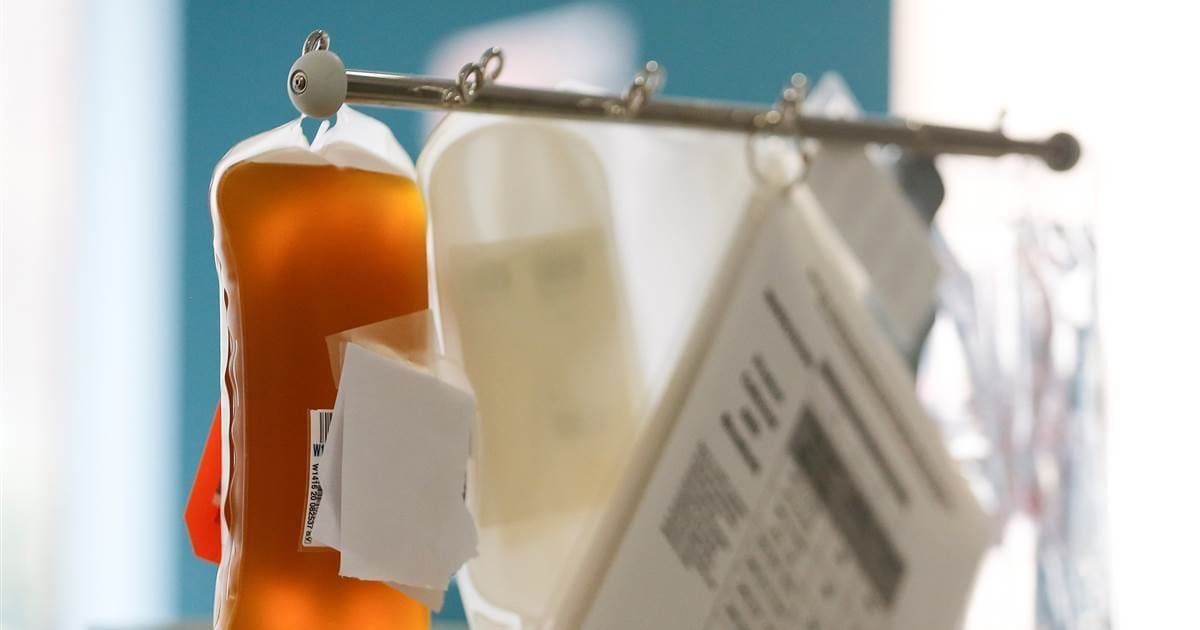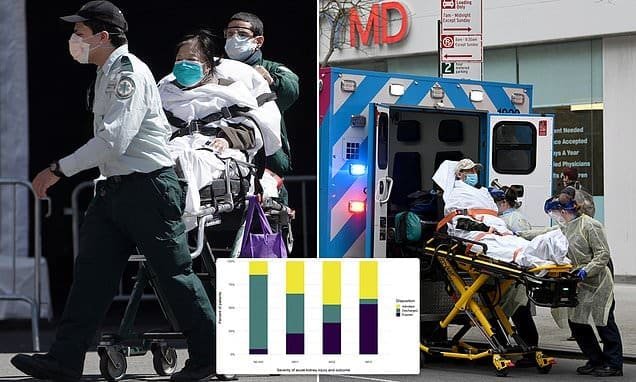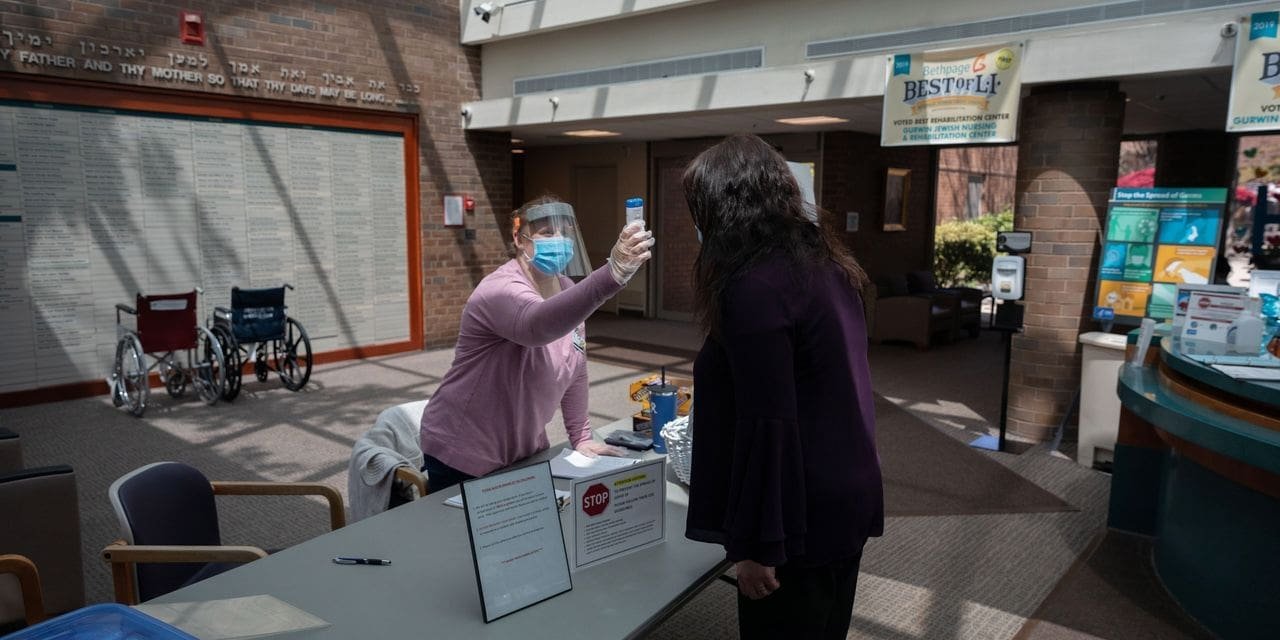Why Is It So Hard to Figure Out If the Coronavirus Is Airborne?
Scientists are debating a key aspect of the coronavirus that causes covid-19: whether the virus lingers in the air for long enough and in a great enough quantity for airborne transmission to be a common source of infection. It seems like a simple enough question, but it’s actually posing quite a challenge to researchers.
The new coronavirus, called SARS-CoV-2, infects the body primarily through a person’s respiratory tract. The virus reaches our throat, lungs, or nose, gets cozy inside our cells, and begins to churn out more of itself like a demented copier. Some of these copies then infect other people through the virus-laced bits of liquid and other assorted gunk that its victims breathe or cough out into the world, as well as through surfaces and objects contaminated with those secretions.
Every exhalation contains large and small particles of moisture. Larger particles, or droplets, can only travel a short distance before they hit the ground. Smaller particles, however, can float in the air for much longer before they fall or dry up. So when scientists talk about a virus being airborne, such as measles, they’re saying that it can survive intact inside these tinier aerosols and can thus infect others long after a sick person has left the room.
We know for sure that SARS-CoV-2 spreads easily through larger droplets—that’s why we’ve spent the last three months desperately trying to stay at least six feet apart from one another. Past that point, experts generally agree that the risk of catching the virus through droplets is significantly much lower. But if the coronavirus can be routinely transmitted through aerosols, then these precautions are far too meager. That would be bad enough for the average person, but it’s downright terrifying for health care workers or other high-risk groups who spend the most time around infected people.
In mid-March, researchers published a study in the New England Journal of Medicine that some media outlets reported as firm evidence that the virus could be airborne. The experiment found that under certain conditions, the virus could be suspended in the air for at least three hours. But soon after publication, other scientists criticized the media’s reporting of the study and its implications, as well as the study itself. Last week, several of these criticisms were published in the NEJM as editorial letters.
“We just wanted to point out that this paper doesn’t confirm that there’s aerosol transmission,” Sanjay Jain, an infectious disease specialist at John Hopkins and one of the co-authors of these letters, told Gizmodo by phone. “That’s not to say there can’t be aerosol transmission—we’re still trying to figure that out.”
For one, Jain said, the researchers in the NEJM study didn’t simulate real-world conditions to study the virus’s airborne potential. They instead used a device known as a nebulizer to artificially create aerosolized particles. That decision wasn’t a secret, but it means that you can’t assume the same circumstances are happening often outside of a lab.
We do know that certain medical procedures performed on covid-19 patients, such as mechanical ventilation, can create high amounts of infectious aerosols. During these procedures, health care workers need more effective protective equipment, mainly a respirator mask such as the N95, to stay safe. But in other important contexts, the evidence for aerosol transmission of covid-19 is weak, at least right now.
Earlier this month, for instance, scientists in China published a case study of a 10-person outbreak likely tied to a single customer eating at a restaurant. Patient A1 was seated in the middle of a row of tables in the back of the restaurant, while the nine other cases were seated to the person’s right or left. Because these tables were all relatively close and in the line of sight of an air conditioning (AC) unit, the researchers speculated that the AC carried the first person’s short-lived droplets back and forth through the tables. If the virus were capable of being airborne, though, then other customers farther away should have gotten sick as well, they argued. But none did.
There isn’t zero evidence for aerosol transmission. Some studies have found the genetic footprint (RNA) of the virus in samples taken from the air of infected patients’ hospital rooms or in places where the virus could have only reached if it stayed airborne, such as in air ducts. “But these studies have their own limitations,” said Petros Karakousis, also an infectious disease specialist at John Hopkins and another co-author of the NEJM letters to the editor. “The PCR tests commonly used to detect the presence of the virus usually can’t tell us whether there would have been enough of the live virus left in the air to actually infect another person.” So these tests might be only finding the virus’s broken, non-infectious traces.
Other studies of hospital rooms have found the opposite pattern, with no signs of airborne virus. And some studies of health care workers have suggested that surgical masks may provide as much protection from infection as N95 respirator masks, even during procedures that could be aerosol-generating. Right now, in other words, the evidence is decidedly mixed.
That doesn’t mean we shouldn’t be as careful as possible or that further research isn’t needed. The CDC and World Health Organization still advise that health care workers use N95 masks if performing an aerosol-generating procedure, for instance. Meanwhile, some health care workers have argued that more procedures, including chest compressions for CPR, should be considered aerosol-generating and require additional protective gear.
While knowing that the virus isn’t airborne wouldn’t change the need for physical distancing, it might provide some added margin for error as we start to reopen parts of society. For most people, it remains true that the best thing you can do to avoid catching or transmitting the virus is to stay home as much as possible and avoid large crowds and close contact with people outside of your household. That would be good advice whether or not the coronavirus can spread readily through the air.






Recent Comments